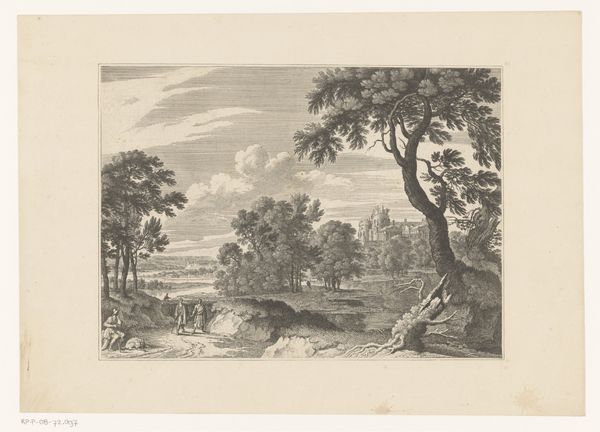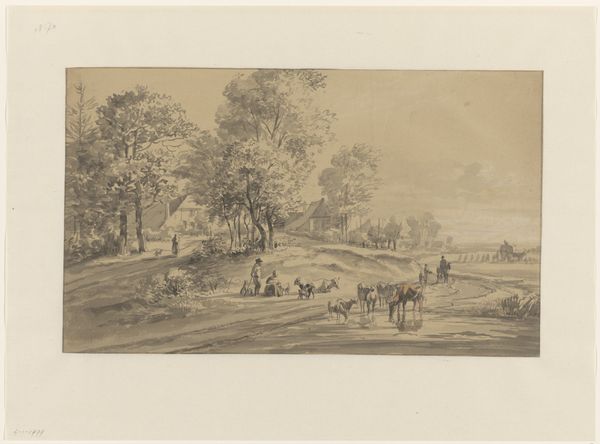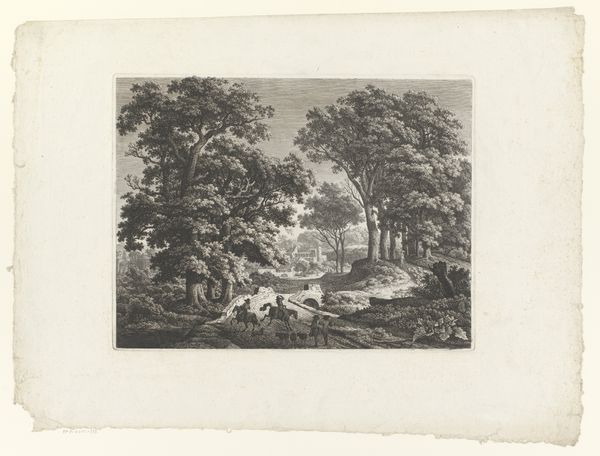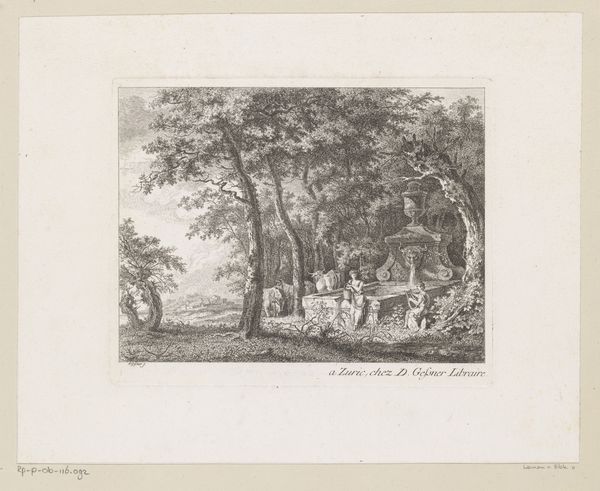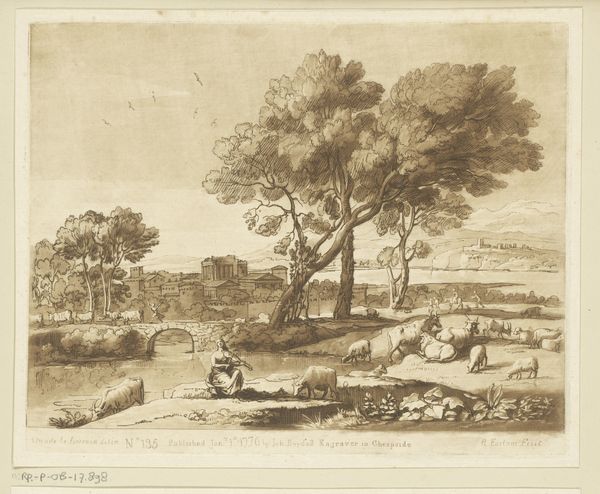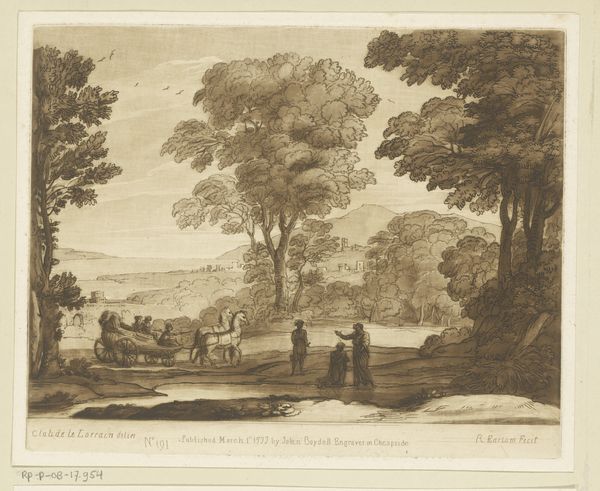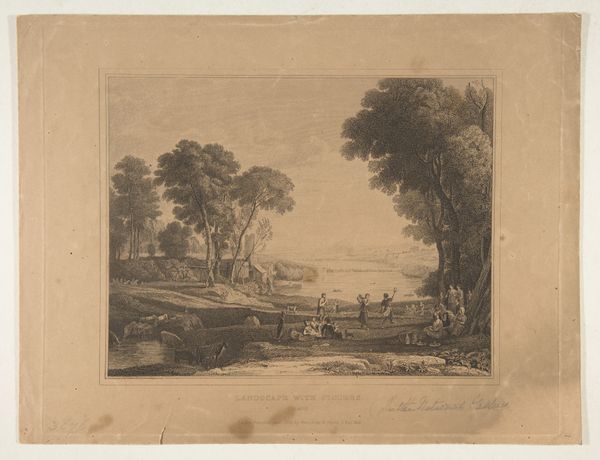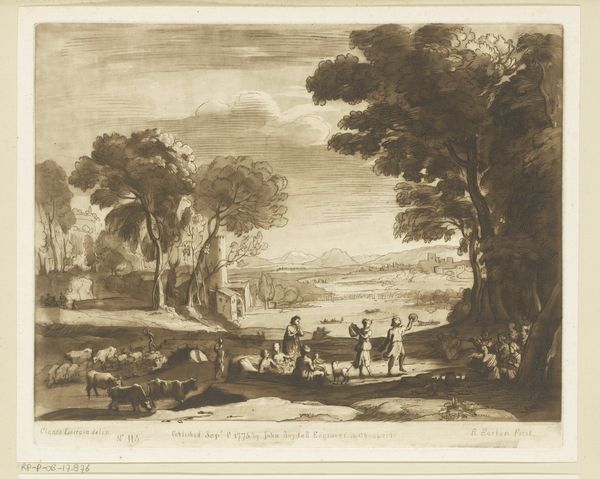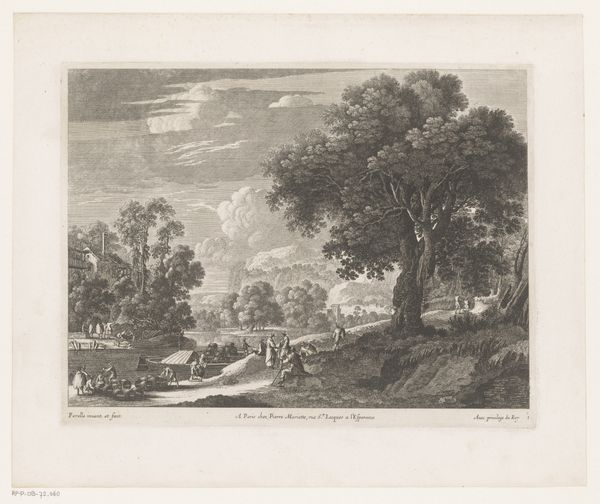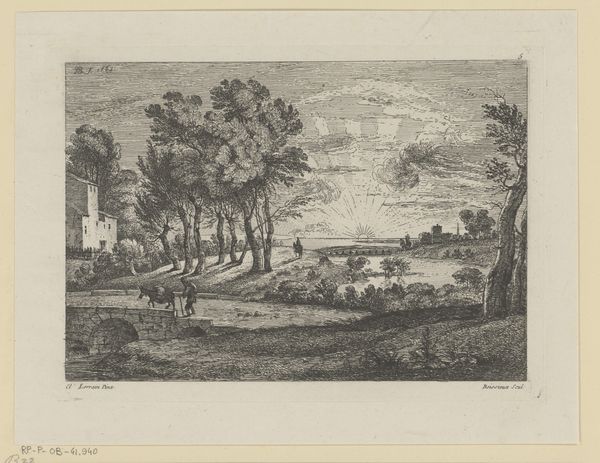
Dance Under the Trees (Landscape with Rural Dance) 1742
0:00
0:00
Dimensions: sheet: 14 3/16 x 17 15/16 in. (36 x 45.5 cm) plate: 12 1/4 x 15 11/16 in. (31.1 x 39.8 cm)
Copyright: Public Domain
Editor: This is "Dance Under the Trees (Landscape with Rural Dance)," an engraving by Claude Lorrain, made in 1742. The scene feels very composed, almost staged, like a theatrical pastoral scene. What statements about society do you think Lorrain is trying to make here? Curator: Considering the period and Lorrain's other works, it speaks to the idealized view of rural life held by the aristocracy. It presents a fantasy, obscuring the realities of peasant labor and the hierarchical structures of power. It presents a specific intersection of wealth, leisure, and class, carefully constructed. Do you see any subtle indicators of this social positioning within the engraving itself? Editor: Well, the figures aren't really *working*; they're dancing or relaxing. There's no visible hardship. It's all leisure, like they're putting on a show for themselves. Curator: Exactly! This is key. Look at the landscape too. Is it wild and untamed? Or carefully curated and "picturesque"? Lorrain, though celebrated for his landscapes, often catered to the tastes of wealthy patrons, reinforcing their vision of an ordered, controlled world. His are less records of nature and more statements on ownership and social order. How might we relate this to contemporary concerns of environmental justice and the commodification of nature? Editor: I hadn't thought of it that way, but it makes total sense. It's less about the "dance" and more about who has the privilege to dance in the first place. It certainly opens up the image to a more complex and challenging interpretation. Curator: Indeed. Art gives us opportunities to decode historical narratives, revealing underlying assumptions about class, power, and the romanticization of labor. It highlights that art doesn't exist in a vacuum but is very much part of wider social constructs.
Comments
No comments
Be the first to comment and join the conversation on the ultimate creative platform.
